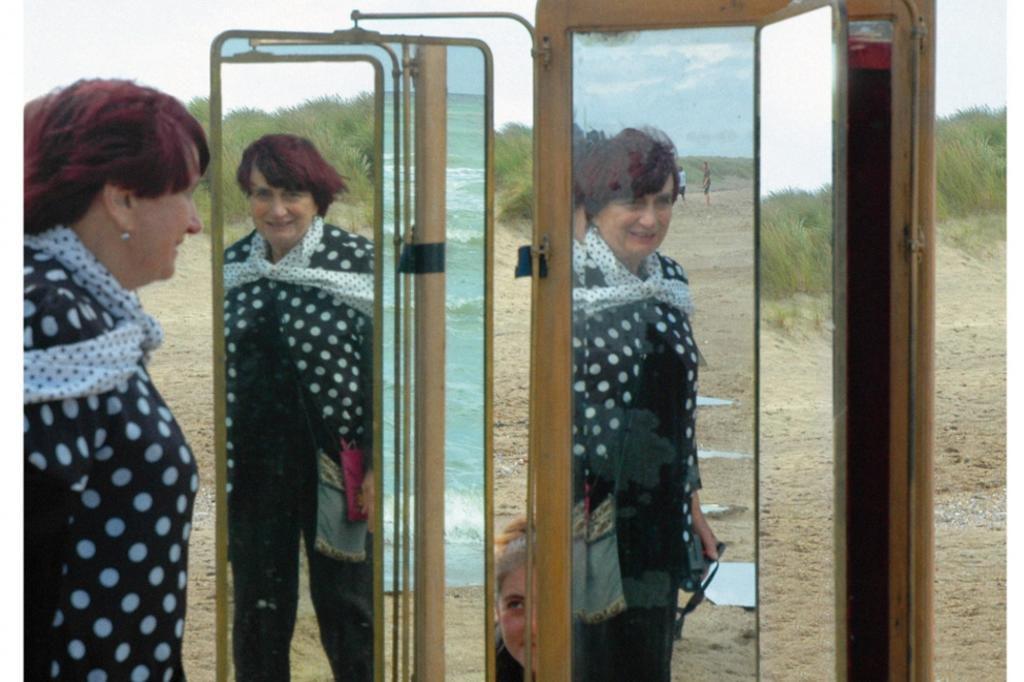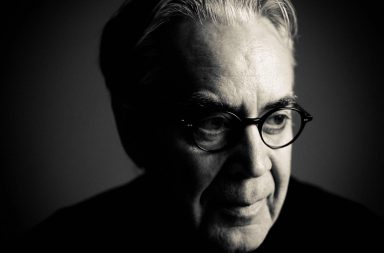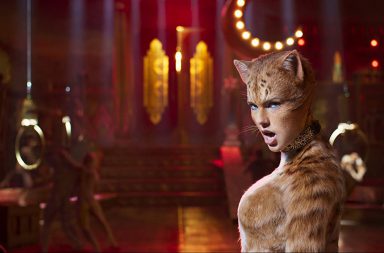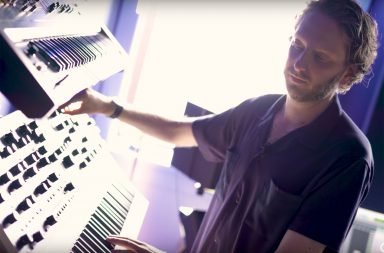Saying that Agnès Varda was a complete artist is quite an understatement. A director, obviously, but also a photographer, a plastic artist and an activist – rather than making socially and politically engaged films, she turned activism into a form of art. Her art (or, should we say, her arts) has displayed the timeless modernity of her work through the richness of her artistic language, her relentless curiosity and her love for digressions. When she decided that she would be doing films, in the mid-1950s, and when she went from photography to a cinema, she stated that it was because she wanted to hear what the pictures had to say. All from the start, cinema was, for Agnès Varda, a matter of sound. Not sound as we mean it, no, but rather the proper musicality of it.
In the 2000 documentary The Gleaners and I – my first encounter with Varda’s work – I was struck by the way she spoke, saying one sentence after another while deconstructing the words that form them, playing with these words in a childlike, poetic way. A music lover, as her peers would often describe her, Agnès Varda let music enter into her words, her unique phrasing being some kind of musical performance. She hid the illusion of writing behind the reality of composing with words, allowing herself to play with them because words were one thing Varda knew at least as well as how to handle a camera. “Very few are the directors whose voices we hear in their films […] It was something very new in film,” Varda’s friend and long-time collaborator, composer Joanna Bruzdowicz told me. “[In The Gleaners and I,] she does a succession of sounds with my music and her voice, her words, her punctuation.” The recent Faces Places (2017) is one of the most beautiful examples of that: co-directed with JR, the film is narrated by both of them, reading the beautiful words of Varda like two people singing a very touching duet. In Varda’s films, the music and the spoken word coexist but rarely blend. Just like voice needs to occupy its own space, music does as well. In Vagabond (1985), in which Mona (Sandrine Bonnaire), a young homeless girl wanders through the wild nature of the South of France, the original score only exists through the absence of words. The theme, composed by Joanna Bruzdowicz and based on a piece she wrote for her string quartet a few years earlier, expresses Mona’s tragic loneliness and is only present on tracking shots that follow her desperate wandering, surrounded by a beautiful yet hostile setting. It plays like Mona’s inner, self-conscious voice, as an antithesis of the prerecorded songs full of life and strength that Varda includes throughout the film, including The Doors and French pop group Les Rita Mitsouko – Bruzdowicz’s score is haunted by death.

Joanna Bruzdowicz — pwm.com.pl
The Polish composer, who has been living in France, met her match with Varda, who asked her to score both fiction films and documentaries, as well as one of her exhibitions. When she scored Jacquot de Nantes (1991), a film about the childhood of The Umbrellas of Cherbourg director – and Varda’s husband – Jacques Demy, Joanna Bruzdowicz wrote a beautiful theme for strings, trumpet and saxophone. “Agnès asked me not to write any music in the style of Michel Legrand and I said to her, ‘I’ll never do anything in the style of Michel Legrand, I don’t like his music!’,” she told me, laughing. “He was a great composer but it was just not my style.” The main theme for Jacquot de Nantes is a tender piece which captures both Jacques Demy’s memories of his youth and the dreams of the young Jacquot, punctually overshadowed by the fatal imminence of his passing – Demy struggled with AIDS at the end of his life, and died a few days before Varda finished the shooting of the film. “I went on set, I usually did that for a couple of days, so I could feel the atmosphere. [Demy] was there because he was also an actor in the film. He had just died when I did the music. [Varda] called me all the time because it was very important to her to know what Jacquot’s theme would be. […] The day before I left for Warsaw, where I did the recording sessions, she called me and asked if she could use a snippet of my Concerto for Violin no. 2, because Jacques loved it so much.” A harrowing experience for Varda and all of her crew, Jacquot de Nantes was also challenging for Joanna Bruzdowicz, who recalled having dismissed her saxophonist and trumpeter hours only before the very last day of recording because Varda did not think the instruments would work. “The next day, at noon, Agnès called me: ‘I haven’t slept all night. I think we really need the trumpet and the saxophone.’ The saxophone player had just moved in a new flat and he didn’t have the telephone! The only information I had was that he used his day off to take his daughter in a park somewhere, feeding the ducks. The conductor and I tried to reach him, but he said, ‘There are 42 parks in Warsaw! Thirty of them have pounds! How do you want us to find him?’ But we finally did, he came later in the afternoon and we finished recording the main theme. For years and years after this, I sent Agnès postcards with pictures of ducks!” In the same way she blurred the lines between fiction and nonfiction in her work, it is very hard to find a separating line between people who were close to her in her work and in her private life. Varda, although very committed to her work, was faithful to the image of a little light-hearted lady, and could create lively memories out of the saddest situations.

Jacquot de Nantes – Ciné-Tamaris
Ever since her early films, death has been an ominous, growing shadow that flew over Varda’s works. In Cléo from 5 to 7, it is right there, as we are waiting, along with the heroin, for her results to know if she has cancer. Vagabond opens with the image of the lifeless body of the protagonist. She even shot with great details, the ill hands of Jacques Demy in Jacquot de Nantes. And every time, the original score has a narrative function, deeply rooted into the films’ themes more than in their stories, and is somehow linked at one point or another to death. When Cléo sings ‘Sans toi’, it is exactly at the middle of the film, and the function of music here – a sorrowful pop ballad written by Varda and composed by Legrand – is to trigger the fear, the anger and the weariness of someone who might learn that she might die. She was the one who used to get the attention, but from that moment on, she would celebrate life by watching people being alive. “Music emphasizes the image but images emphasize the music as well. It’s what makes Agnès’s films so unique,” as Joanna Brozdowicz beautifully put it. And Varda, a chameleon artist, knew that her career in filmmaking, in which she explored many genres, could only be enriched by welcoming various music styles.

Agnès Varda on the set of Cléo from 5 to 7 — Roger Viollet/Getty Images
The director’s relationship with music went well beyond the only purpose of music itself. She formed close friendships with Joanna Bruzdowicz and Michel Legrand, whose name is unmistakably associated to Jacques Demy’s films, but also with actress, model and singer Jane Birkin (who sang her husband Serge Gainsbourg’s lyrics), Georges Delerue… When Varda and Demy, at the end of the 1960s, moved to California, they met Jim Morrison, with whom they became close friends. While Demy shot his American remake/follow-up to his first feature film Lola, Model Shop, Varda, who had met the Black Panthers, hippies and who became familiar with the protest movements of that time, directed a film about counterculture, Lions Love (…and Lies), and wrote one of the main parts for the Doors leader. Morrison turned down the role but accepted to appear in the film nonetheless – he, along with Andy Warhol, can be seen at the beginning of the film. She gave the two parts to James Rado and Gerome Ragni, who wrote the Broadway musical sensation Hair, while the original score was composed by electronic music and vocoder pioneer Joseph Byrd.
Some electrifying musical gems can be found in Varda’s films, a token of of her limitless curiosity and interest in music which had always gone hand in hand with the director’s precision and meticulousness. According to Joanna Bruzdowicz, “she knew very well what she wanted, in the field of film music as well.” And the composer was lucky that it was with her that Varda experimented her most radical – yet stunning – efforts with music (and how to edit it). Bruzdowicz’s refined harmonies, executed with a perfect prosody, equally powerful when crushingly sad than when surprisingly joyful, are always coupled with a vast range of non-classical pieces – whether it be pop, rock or even punk music (Vagabond, Kung-Fu Master!), French standards from the interwar period (Jacquot de Nantes) or even… rap music (The Gleaners and I) – giving each film its own musical identity, extremely enjoyable and complex at the same time.

Agnès Varda and JR, Faces Places — Cohen Media Group
And yet, I could not totally agree with Joanna Bruzdowicz when she told me that “a film composer is a technician.” It is true that her encounter with Agnès Varda came after the director discovered Bruzdowicz’s string quartet “in a huge record store on the Champs-Elysées.” The composer recalls that Varda called her “because she wanted to know if she could use fragments of [her] string quartet and asked [her] if [she] could write additional pieces that would be more significant in [Vagabond].” But Varda was attracted to digressions and it is hard to picture how she could not have been interested in letting the composer express her art with complete freedom. Or maybe, Bruzdowicz’s respect for the rigour of Varda’s ideas is precisely the reason why these scores and these films are so great.
There is still an occult dimension about the music of films directed by Agnès Varda. And that begins with the almost total unavailability – as in “inexistence” – of Varda’s film scores on album. A CD was released some twenty years ago — it is now a true rarity— and featured Joanna Bruzdowicz’s compositions for Vagabond, Kung-Fu Master!, Jane B. par Agnès V. and Jacquot de Nantes. And that is nearly everything you can get your hand on. A real shame, yes, but it also supports the idea that Agnès Varda was an artist whose work could preferably be appreciated in its entirety. When I brought this topic, the composer replied that she “could do a concert only made of [her] film scores for Agnès Varda if [she] wanted to, because the music can also exist on its own.” And yet, she never did, except for this one time in L.A., when musicians “performed the score for Vagabond live while scenes from the film were shown”, which brings us back to the unflinching bilateral relationship between what Varda makes us see and what she makes us hear.
The truth is, the music of an Agnès Varda film is always powerful. Even without the images. Perhaps it is due to her direction, perhaps not. But she loved music. Her artistic language was one of the very few in which the cinematic grammar was essentially built on the importance of sounds in general, and of music in particular. And in return, musicians loved her. Even Madonna was an admirer of Varda’s art: she invited her to sing with her when the goddess of pop made an appearance Place de la République, in Paris, a few weeks after the November 2015 attacks, and wanted to write and direct a remake of Cléo from 5 to 7, a project which she later dropped. “This relationship with Agnès, it was special. Special and beautiful,” Brozdowicz fondly remembers. “I have worked with a lot of directors in my life, but with Agnès, it was unique. She had an extraordinary persona, with such intelligence and observation capacities, […] I think she was a musician at heart.” Because the artist who made decisions about music was first and foremost someone who loved to listen to it, and maybe that is what we just need to remember.
Written by Valentin Maniglia, edited by Marine Wong Kwok Chuen




